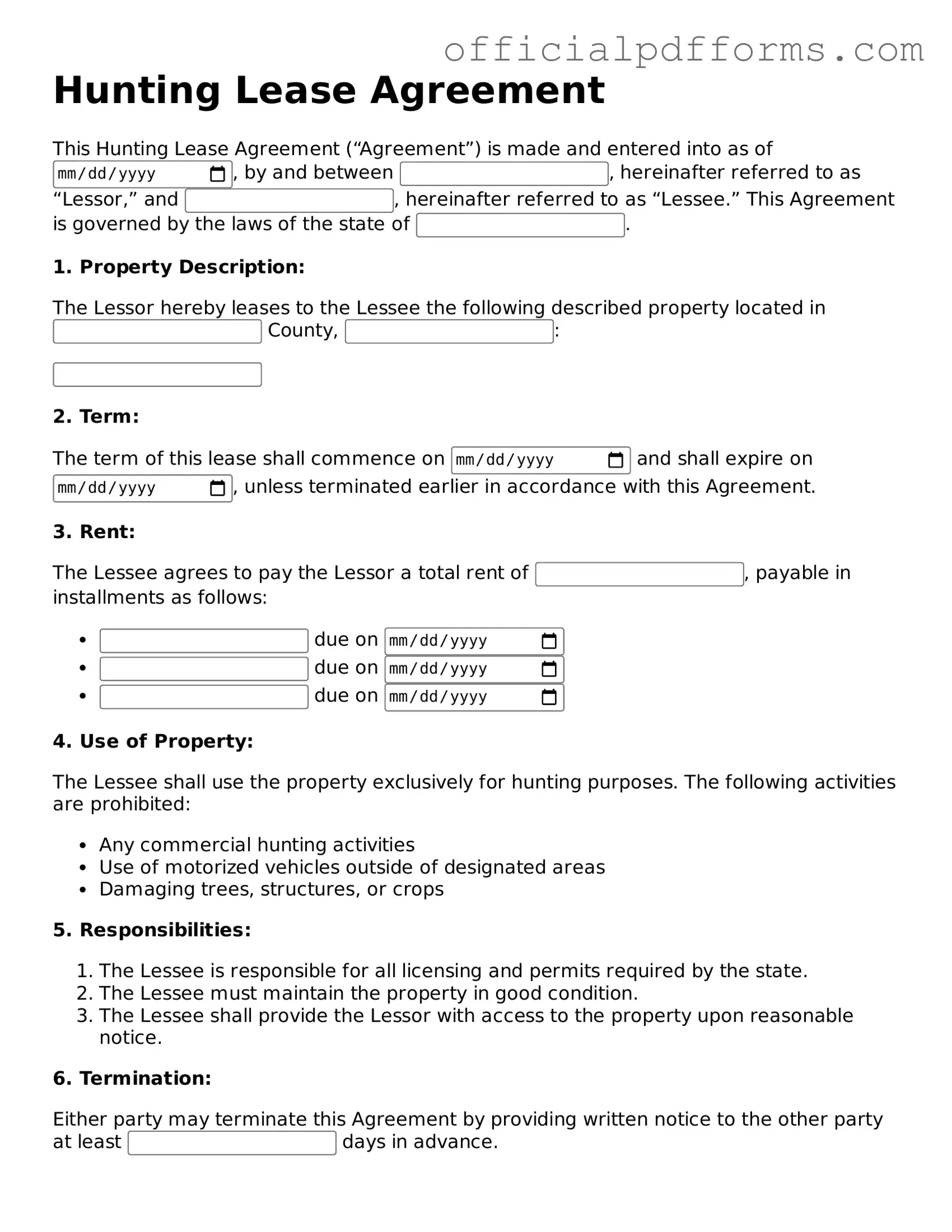Steps to Filling Out Hunting Lease Agreement
Completing the Hunting Lease Agreement form is an important step in establishing a clear understanding between the landowner and the hunter. This form ensures that both parties are aware of their rights and responsibilities. Follow these steps carefully to fill out the form accurately.
- Begin by entering the date at the top of the form.
- Fill in the name and contact information of the landowner.
- Provide the name and contact information of the hunter.
- Clearly describe the property being leased, including its location and any boundaries.
- Specify the duration of the lease, including start and end dates.
- Indicate the amount of rent to be paid and the payment schedule.
- Outline any specific rules or restrictions regarding hunting on the property.
- Include any necessary signatures from both the landowner and the hunter.
- Make a copy of the completed form for both parties to keep for their records.
Once the form is filled out and signed, both parties should review it together to ensure that everything is clear and understood. This helps to foster a positive relationship and ensures a smooth hunting experience.
